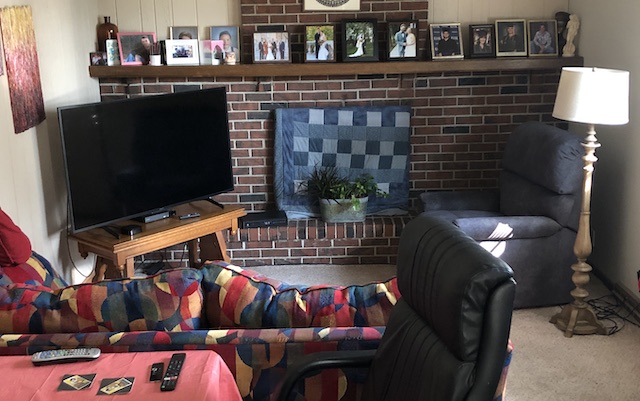In December of 2020, when it became clear we were not going to be returning to normal life any time soon, we purchased a big honking 55-inch 4K TV and settled in for a year of watching movies at home. By Dec. 31, 2021, we had watched 236 movies either together or separately. This is one of series of blog posts about those films.
I’ve always loved collective nouns – unique words that describe a group. For example, you have a gaggle of geese, a pod of whales, an unkindness of ravens, or a stand of trees. For today, I would like to claim the right to coin a new one – A Murder of Hitchcock Films.
Alfred Hitchcock has long been known as the master of suspense or horror films, but he also did comedies, espionage flix, and thrillers. Over the last year we watched a lot of Hitchcock canon, both familiar and rare. Given that Turner Classic Movies had a week featuring Hitchcock’s films, we’ve got five in a row here:
- 1955 – The Trouble With Harry, directed by Alfred Hitchcock, and starring a very young Shirley MacLaine in her movie debut. It also stars Edmund Gwenn, John Forsythe, Mildred Natwick, and Jerry Mathers (of Leave it to Beaver fame). This is a rare comic outing for Hitchcock, where the trouble with Harry is that he is dead. There are several characters in it who all have reason to wish Harry dead, and all of them suspect that they might be the killer. This movie is an absolute hoot and is one of my favorites of the lesser known of the Master’s films.
- 1959 – North by Northwest, directed by Hitchcock, and starring Cary Grant, Eva Marie Saint, and James Mason. This is the movie that everyone thinks about when it comes to Hitchcock. It has everything – mistaken identity, a chase by a crop duster airplane, a chase across Mt. Rushmore, and a cool blonde. I realize this is an acclaimed film and much beloved, but for me the plot is just a bit over the top.
- 1954 – Rear Window, directed by Hitchcock, and starring Jimmy Stewart, Grace Kelly, Wendell Corey, Thelma Ritter, and Raymond Burr. This is by far my favorite Hitchcock film – It has a great mix of romance, style, menace, and murder, along with a giant dose of humor. It’s all shot in a very confined space – Jimmy Stewart’s apartment and the central courtyard of the apartment building and row various windows he can see into from his apartment. Instead of a trailer, I’ve got a clip of the opening two-plus minutes of the film. It’s a long tracking shot that introduces most of the main characters and plot lines of the film. It’a great opener.
- 1956 – The Man Who Knew Too Much, directed by Hitchcock, starring Jimmy Stewart and Doris Day. This film won an Oscar for best song for Doris Day’s rendition of “Que Sera Sera (Whatever Will Be, Will Be)”. This was Hitch’s second movie using this title, though it is quite different from his 1934 version. Unlike so many songs in movies, Day’s Que Sera Sera is a key plot point in the movie’s climax that takes place in the Royal Albert Hall. I’m rather fond of it, but my Dear Wife is critical of it for the same reason she dislikes the modern horror movie, A Quiet Place. I won’t explain her objection to either movie, but after watching them, it shouldn’t be hard to figure out. In place of the trailer, here’s Day singing “Que Sera Sera” with Christopher Olsen, who plays her son.
- 1966 – Torn Curtain, directed by Hitchcock, starring Paul Newman and Julie Andrews. I don’t have a lot to say about this cold war thriller as I was tired that night and slept though most of it while my Dear Wife and mum-in-law watched. The plot, involving a spy caper in the old East Germany is dated, and it just didn’t capture my attention. Responsible viewers can disagree.
And finally – Jumping out of sequence here, I watched the Marx Brothers A Night at the Opera recently, and I think its third act is the best of any movie comedy ever made. So many other movie draw from it. My Favorite Year’s finale is clearly an homage to it.
https://youtu.be/rsAvTNUA3TY
Coming Next: A mix of movies from 1941 to 2016




